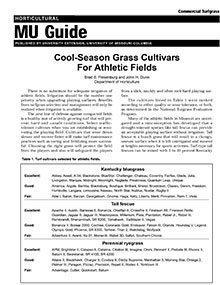

Cool-Season Grass Cultivars for Athletic Fields
Reviewed
This guide provides turfgrass recommendations for athletic fields, emphasizing irrigation, traffic-tolerant cultivars, and effective seeding methods.
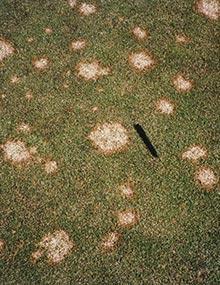
Identification and Management of Turfgrass Diseases, Page 15
Reviewed
Microdochium patch is most common on new bentgrass greens under cover or in situations where nitrogen fertility was high going into the winter.
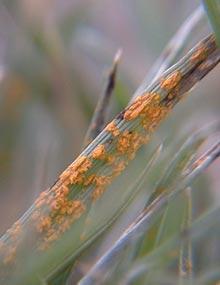
Identification and Management of Turfgrass Diseases, Page 18
Reviewed
Rust occurs to some extent on all turfgrasses, but the rust fungi are generally host specific. Rust is most severe on susceptible cultivars of Kentucky bluegrass, tall fescue, perennial ryegrass and zoysiagrass. Rust symptoms usually appear in late August to early September and continue through the fall months.

Sewer Line Chemical Root Control (Category 5B)
Reviewed $40
This manual contains information that applicators must be familiar with to become a certified sewer line root control applicator.
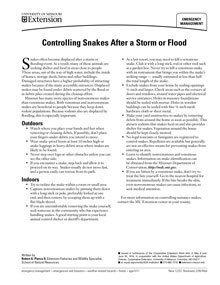
Controlling Snakes After a Storm or Flood
Reviewed
Snakes often become displaced after a storm or flooding event. As a result, many of these animals are seeking shelter and food in areas close to people. Read more to find out what to do when you encounter one.
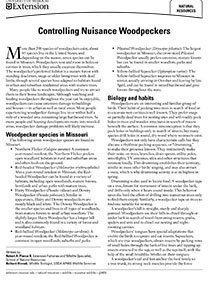
Controlling Nuisance Woodpeckers
Reviewed
Learn effective methods to prevent and control woodpecker damage to buildings, including exclusion techniques, visual repellents, and habitat modifications.
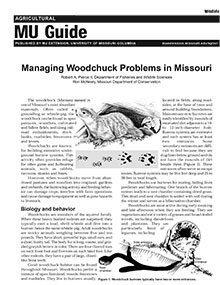

Tree Squirrels: Managing Habitat and Controlling Damage
Reviewed
Missouri is home to three species of tree squirrels. Visit our site for our Tree Squirrels: Managing Habitat and Controlling Damage guide.
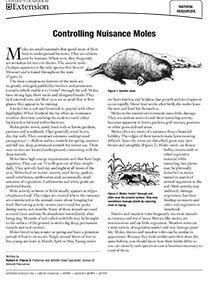
Controlling Nuisance Moles
Reviewed
Moles often are a nuisance and can harm your plants. Visit our site to learn about Controlling Nuisance Moles.

Controlling Rodents After a Flood
Reviewed
Flooding displaces many rodents from their natural habitat. As a result, these animals are seeking areas that can provide food and shelter, such as homes, sheds, barns and other buildings.
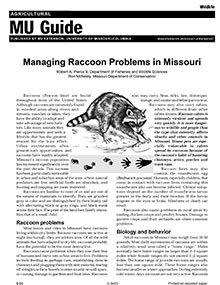
Managing Raccoon Problems in Missouri
Reviewed
Raccoons have adapted to urban areas, causing damage to property and posing health risks. Learn how to manage and prevent raccoon problems.
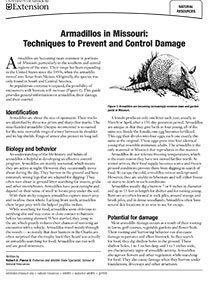
Armadillos in Missouri: Techniques to Prevent and Control Damage
Reviewed
Armadillos are becoming more common in Missouri. Visit our site for our Armadillos in Missouri: Techniques to Prevent and Control Damage resource.
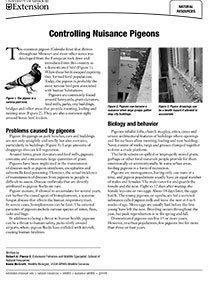
Controlling Nuisance Pigeons
Reviewed

Controlling Nuisance Muskrats in Missouri Ponds and Lakes
Reviewed
Muskrats can damage ponds and crops through burrowing and feeding. This guide outlines effective control methods.
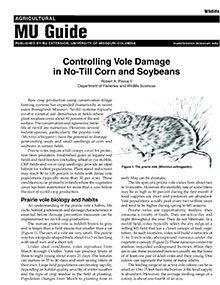
Controlling Vole Damage in No-Till Corn and Soybeans
Reviewed
Voles in no-till fields can reduce corn and soybean stands by up to 100%. Learn to identify damage and manage vole populations before planting.
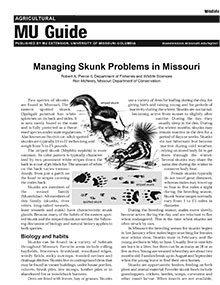
Managing Skunk Problems in Missouri
Reviewed
Striped and eastern spotted skunks inhabit diverse environments and may cause issues like lawn damage, poultry predation, and unpleasant odors.
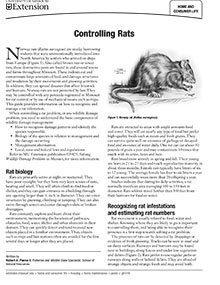
Controlling Rats
Reviewed
Norway rats are stocky burrowing rodents that were unintentionally introduced into North America by settlers who arrived on ships from Europe. Also called brown rats or sewer rats, these destructive pests are found in and around towns and farms throughout Missouri. This guide provides information on how to recognize and manage a rat infestation.

Collection and Submission of Samples for Fish-Kill Investigation and Toxic-Substance Analysis
Reviewed
Fish kills occur in natural and cultured populations. They can be due to disease, poor water quality or a toxic substance. Fish kills represent emergencies, and producers must be prepared for them in advance. Learn more in this guide.
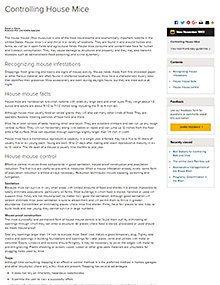
Controlling House Mice
Reviewed
Learn to identify signs of house mouse infestations and implement effective control methods, including sanitation, exclusion, and trapping.
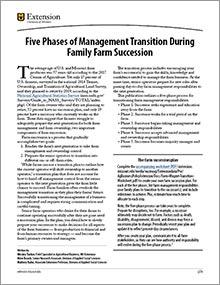
Five Phases of Management Transition During Family Farm Succession
New
Use a gradual process to transition farm management responsibilities from one generation to the next to improve the odds of keeping your farm in the family. This 5- phase process asks multiple generations to set goals, timelines and evaluation milestones.
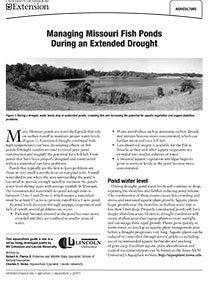
Managing Missouri Fish Ponds During an Extended Drought
Reviewed
Managing fish ponds during drought requires addressing reduced water levels, fish stress, and oxygen depletion.
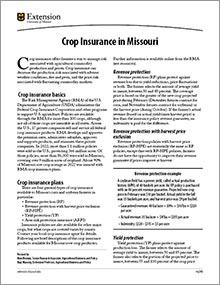
Crop Insurance in Missouri
Revised
Learn four types of crop insurance that can manage corn, soybean and other row crop risk. Read about units you can insure and the premium cost for a policy.
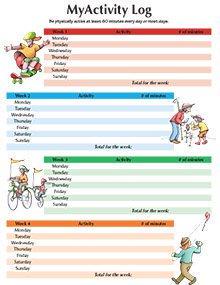
MyActivity Log for Kids (Bundle of 25)
New $15.50
Editor's note
The following abstract describes a publication that is available for purchase or as a downloadable PDF.
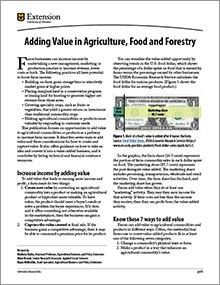
Adding Value in Agriculture, Food and Forestry
Reviewed
See 7 ways to add value to farm commodities or products, and learn how to turn a value-added agriculture idea into a business that can increase farm income.
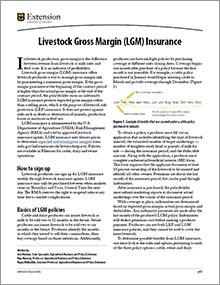
Livestock Gross Margin (LGM) Insurance
Revised
LGM insurance helps producers manage risk by guaranteeing a minimum gross margin. Learn how it works, and see cattle, swine and dairy examples in this guide.